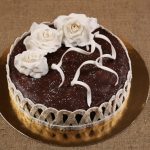Fruit cake decoration has been a cherished tradition for centuries, with roots that extend across various cultures and regions. From the rich, fruity flavors to the intricate designs that adorn its surface, fruit cakes hold a special place in culinary history. In this article, we will delve into the art of fruit cake decoration, offering valuable insights into its history, selection, tools, techniques, creative ideas, preparation tips, troubleshooting, and special occasion customization.
The history of fruit cakes spans numerous countries and traditions, each contributing to the evolution of this beloved dessert. Understanding the cultural significance and origins of fruit cakes can provide valuable context for those looking to embark on their own decorative journey with this timeless treat.
By exploring the historical background of fruit cakes from different parts of the world, we can gain a deeper appreciation for the variety of flavors and techniques that have shaped this delectable confection over time.
Throughout this article, we will also explore essential tips on selecting the perfect fruit cake base for decoration. From considering flavor profiles to prioritizing texture considerations, choosing the right foundation is crucial for achieving visually stunning and delicious results. Additionally, we will cover the essential tools required for effective fruit cake decoration – including piping bags, tips, and specialty tools – as well as step-by-step instructions on various decorating techniques such as icing application and fondant sculpting.
Choosing the Perfect Fruit Cake
When it comes to fruit cake decoration, the first step is selecting the perfect fruit cake base. The right base will not only provide a delicious canvas for your decorations but also complement the overall aesthetic of the final product. Here are some tips on selecting the best fruit cake base for decoration:
- Consider the flavor profiles: Different fruit cakes have different flavor profiles, from traditional dried fruits and nuts to modern variations with citrus zest or chocolate. Think about what flavors will best complement your chosen decoration style.
- Texture considerations: The texture of the fruit cake is equally important when it comes to decoration. A dense and moist cake may be better suited for intricate fondant designs, while a lighter, airy cake could be perfect for delicate icing work.
Keep in mind that the key to a successful fruit cake decoration is starting with a high-quality base that meets your specific needs and preferences.
Once you have selected the perfect fruit cake base, it’s essential to gather the necessary tools and equipment for decoration. Some essential tools for fruit cake decoration include:
- Piping bags and tips: These are crucial for creating detailed designs with icing or frosting.
- Fondant tools: If you plan on using fondant for your decoration, specialized tools such as rolling pins, smoothers, and cutters will be necessary.
- Edible decorations: From edible glitter to sugar flowers, having an assortment of edible decorations on hand will allow you to add personalized touches to your fruit cake.
With these tips in mind, you can confidently select the best fruit cake base and gather the essential tools needed for effective fruit cake decoration.
Essential Tools for Fruit Cake Decoration
Fruit cake decoration requires specific tools and equipment to achieve stunning designs and professional-looking results. Piping bags, tips, and specialty tools are essential for effective fruit cake decoration, allowing for precision and artistic expression. Whether you’re a beginner or an experienced baker, having the right tools can make all the difference in creating beautiful and impressive decorations.
Piping bags are a fundamental tool for fruit cake decoration, as they allow for precise application of icing, frosting, and other decorative elements. There are various types of piping bags available, including disposable plastic bags, reusable fabric bags, and flexible silicone bags. Each type has its own advantages and is suitable for different decorating techniques and purposes.
In addition to piping bags, a wide range of tips are available to create different patterns and textures when decorating fruit cakes. From basic round tips for writing and outlining to specialty tips for intricate designs like flowers and leaves, having a variety of tips on hand can expand your creative possibilities. Some popular tip styles include open star, closed star, petal, leaf, basketweave, and ribbon.
Specialty tools such as spatulas, offset spatulas, decorating combs, pastry brushes, stencils, edible markers, modeling tools, impression mats, flower cutters are also essential for fruit cake decoration. These tools help with applying even layers of icing/frosting, creating smooth surfaces, adding texture and details to decorations with ease. They can also aid in achieving uniform shapes for embellishments such as flowers and leaves.
With the right combination of piping bags, tips, specialty tools at your disposal; there infinite possibilities when it comes to dressing up your fruit cake with creative decorations that reflect your individual style or celebrate special occasions.
| Tools | Function |
|---|---|
| Piping Bags | Precise application of icing/frosting/decorative elements |
| Tips | Create different patterns/textures: round tips/writing/outlining/flower/leaf/basketweave/ribbon |
| Specialty Tools (spatulas/combs/pastry brushes/stencils/edible markers/modeling tools) | Even layers of icing/smooth surfaces/adding texture/shaping/decorations/details/shapes/> |
Techniques for Decorating Fruit Cakes
When it comes to fruit cake decoration, there are several techniques that can be used to create stunning designs. One of the most common and versatile methods is using icing to decorate the cake. Whether it’s buttercream, royal icing, or fondant, the possibilities are endless when it comes to creating intricate designs and patterns on a fruit cake. Piping bags and tips are essential tools for this technique, allowing for precise detailing and beautiful embellishments.
Another popular method for decorating fruit cakes is using fondant. This smooth and pliable sugar paste can be rolled out and draped over the cake to create a flawless canvas for creativity. Fondant can also be molded into intricate shapes and figures, making it ideal for sculpting decorative elements such as flowers, bows, or even entire scenes.
In addition to icing and fondant, edible decorations offer endless possibilities for fruit cake decoration. From fresh fruit and candied nuts to edible flowers and chocolate shavings, the key to using edible decorations effectively is achieving a harmonious balance of flavors and textures while enhancing the visual appeal of the cake.
These techniques require careful attention to detail and precision, but ultimately they provide an opportunity for creativity and personalization in fruit cake decoration.
| Technique | Description |
|---|---|
| Icing | Decorating with buttercream, royal icing or fondant using piping bags and tips. |
| Fondant | Rolling out smooth sugar paste that can be draped or shaped into decorative elements. |
| Edible Decorations | Incorporating fresh fruit, nuts, flowers or chocolates as decorative elements on the fruit cake. |
Creative Fruit Cake Decoration Ideas
When it comes to decorating fruit cakes, the possibilities are endless. From seasonal themes to personalized messages, there are countless creative ways to adorn a fruit cake and make it truly special. Whether you’re decorating for a specific occasion or simply looking to showcase your artistic talents, here are some inspiring examples of inventive and visually appealing fruit cake designs:
- Seasonal Themes: Embrace the beauty of each season by incorporating themed decorations onto your fruit cake. For example, during the winter months, you can use edible snowflakes, shimmering white icing, and silver fondant accents to create a frosty wonderland. In the spring, opt for vibrant pastel colors and delicate floral designs made from edible flowers or shaped fondant.
- Floral Arrangements: Flowers are a timeless and elegant decoration for any type of cake, including fruit cakes. Whether you choose fresh flowers that complement the flavors of the cake or opt for intricate edible sugar flowers, floral arrangements can add a touch of sophistication and natural beauty to your creation.
- Personalized Messages: Adding a personalized message to a fruit cake is an excellent way to make it meaningful and unique. Consider piping celebratory phrases, heartfelt messages, or even inside jokes onto the cake using colorful icing or edible markers. This personal touch will undoubtedly make the cake stand out and be remembered by its recipients.
These are just a few examples of how you can get creative with fruit cake decoration. Remember that the key to successful decoration is letting your imagination run wild while considering the tastes and preferences of those who will be enjoying your masterpiece.
Whether it’s a festive holiday celebration or a special milestone like a wedding or birthday, taking time to design an extraordinary decor can elevate any occasion. Using various techniques such as icing, fondant application,and other edibles in creating visually stunning patterns will surely impress anyone who lays eyes on them.
Ultimately, when it comes to decorating fruit cakes with these inventive ideas trust in your creative instincts and enjoy experimenting with different styles until you find what works best for you.
Tips for Preparing Fruit Cake for Decoration
When it comes to fruit cake decoration, proper preparation of the cake base is essential to ensure a flawless and professional finish. Before you can start creating stunning designs on your fruit cake, it’s important to follow expert advice on how to prepare the cake for decoration. This includes leveling, filling, and crumb-coating the cake to create a smooth and stable surface for decorating.
Firstly, leveling the fruit cake is crucial for creating an even and symmetrical base for decoration. Use a long serrated knife to carefully trim off any domed or uneven areas on the top of the cake. This will ensure that your decorations sit evenly on the surface of the cake and prevent any lopsided designs.
Next, filling the fruit cake with a delicious and complementary filling is an important step in preparing the cake for decoration. Whether you choose to use jam, buttercream, or ganache as a filling, make sure to spread it evenly across the leveled surface of the cake. This will not only add flavor but also provide stability for layering and decorating.
After leveling and filling the fruit cake, it’s time to crumb-coat the entire cake with a thin layer of frosting or buttercream. This initial coating seals in any crumbs and provides a smooth foundation for adding more decorative layers later on.
Once crumb-coated, you can proceed with applying your chosen fruit cake decoration techniques such as icing, fondant, or edible decorations. By following these expert tips for preparing your fruitcake base, you’ll be well on your way to creating beautifully decorated and delicious treats that are sure to impress.
Troubleshooting Fruit Cake Decoration
When it comes to decorating fruit cakes, there are common issues and mistakes that can arise, but with the right knowledge and techniques, they can easily be fixed. From dealing with icing consistency to preventing color bleeding and handling fragile decorations, troubleshooting fruit cake decoration is an essential skill for any baker or decorator.
Dealing With Icing Consistency
One of the most common issues when decorating fruit cakes is getting the icing consistency just right. Whether you’re using buttercream, royal icing, or fondant, achieving the perfect consistency can be a challenge. If your icing is too thin and runny, it won’t hold its shape when piped onto the cake.
On the other hand, if it’s too thick, it will be difficult to work with and may create an uneven finish. To fix this issue, you can adjust the consistency by adding more powdered sugar to thicken it or a small amount of liquid (such as water or milk) to thin it out.
Preventing Color Bleeding
Color bleeding can occur when using colored icing or decorations on a fruit cake. This often happens when moisture from the cake seeps into the decorations, causing the colors to run and bleed into each other. To prevent color bleeding, make sure that your cake is completely cooled before applying any decorations. Additionally, you can use gel-based food coloring instead of liquid food coloring for better color stability.
Handling Fragile Decorations
Fruit cake decorations can be delicate and fragile, especially when working with intricate designs made from fondant or edible sugar paste. One common mistake is handling these decorations too roughly, causing them to break or lose their shape. To avoid this issue, handle all decorations with care and consider using support structures such as dowels or toothpicks for stability.
If a decoration does break or become misshapen, you can often repair it by gently reshaping or reattaching it using a small amount of fresh icing as “glue.” With these troubleshooting tips in mind, you’ll be well-equipped to address common issues and mistakes when decorating fruit cakes while creating stunning designs that will impress any audience.
Fruit Cake Decoration for Special Occasions
In conclusion, fruit cake decoration is a delightful and creative way to elevate the aesthetic appeal of this beloved confection. From its rich and diverse history to the essential tools and techniques for decorating, there are endless possibilities for customization and personalization. Whether it’s for holidays, birthdays, weddings, or other special events, fruit cakes offer a canvas for unique and stunning designs that can captivate and delight any audience.
By carefully choosing the perfect fruit cake base and using essential tools such as piping bags, tips, and specialty equipment, one can master various techniques like icing, fondant, and edible decorations to create stunning designs. Moreover, with creative ideas like seasonal themes, floral arrangements, and personalized messages, fruit cake decoration becomes an art form that allows individuals to express their creativity while celebrating special occasions.
Finally, with expert advice on proper preparation and troubleshooting common issues during the decoration process, individuals can confidently embark on their fruit cake decoration journey. The proactive approach towards understanding flavor profiles, texture considerations, as well as adopting tailored suggestions for different events ensures that every fruit cake becomes a true work of art that not only tastes delicious but also visually entices.
So go ahead – embrace the artistry of fruit cake decoration and create memorable experiences through visually stunning confections.
Frequently Asked Questions
How Do You Decorate a Fruitcake?
Decorating a fruitcake can be a creative and enjoyable process. One popular way to decorate a fruitcake is by using marzipan or fondant to cover the entire cake, creating a smooth surface for further decorations. This can include piping royal icing, adding festive designs with food coloring, or arranging edible decorations like candied fruits, nuts, or chocolate.
How Do You Garnish a Fruit Cake?
Garnishing a fruitcake is all about adding those final touches that enhance its appearance and flavor. A classic way to garnish a fruitcake is by using whole or halved glace cherries and whole nuts on top of the cake.
Other options include dusting the cake with powdered sugar, drizzling it with icing, or arranging fresh berries around the base of the cake for a pop of color.
How Do You Cut Fruit for Cake Decorating?
When cutting fruit for cake decorating, it’s important to ensure that the pieces are uniform in size and shape for an aesthetically pleasing result. For example, if using strawberries, they can be sliced into even rounds or cut into halves depending on the desired look.
Pineapple rings can also be cut into smaller shapes like stars or hearts for added visual appeal when decorating cakes with fruit.

Welcome to our cake decorating blog! My name is Destiny Flores, and I am the proud owner of a cake decorating business named Cake Karma. Our mission is to provide delicious, beautiful cakes for all occasions. We specialize in creating custom cakes that are tailored specifically to each customer’s individual needs and tastes.





